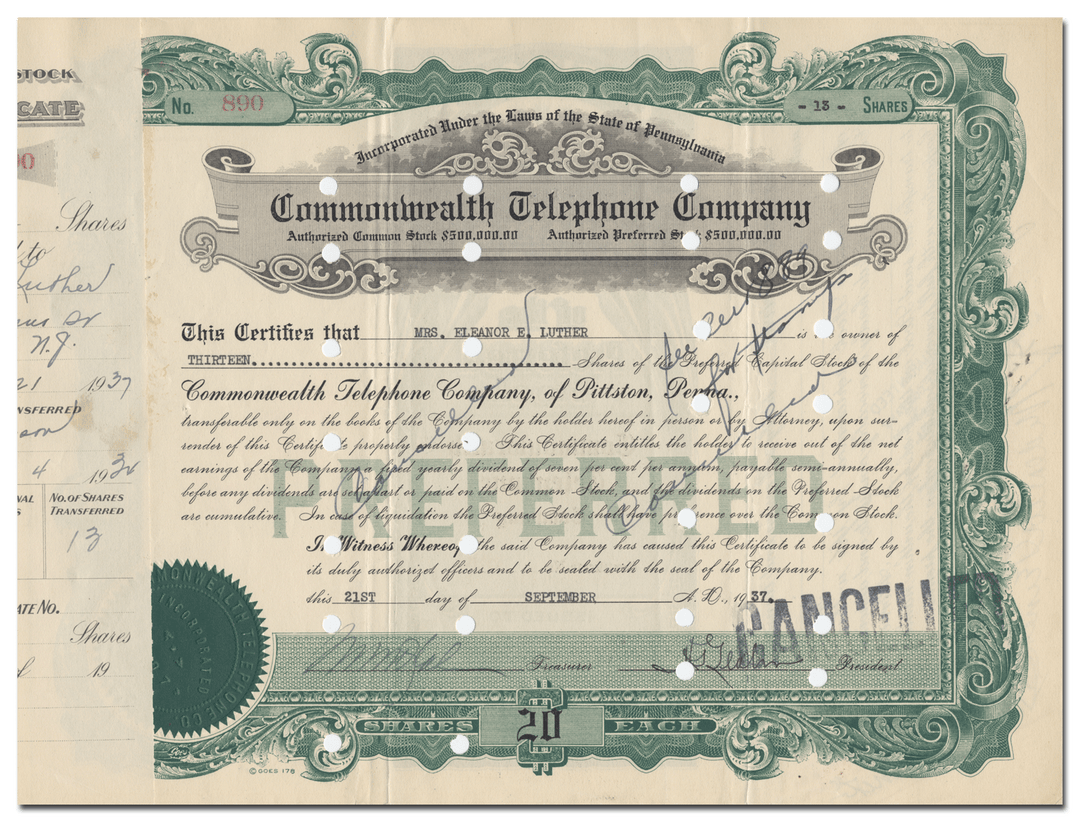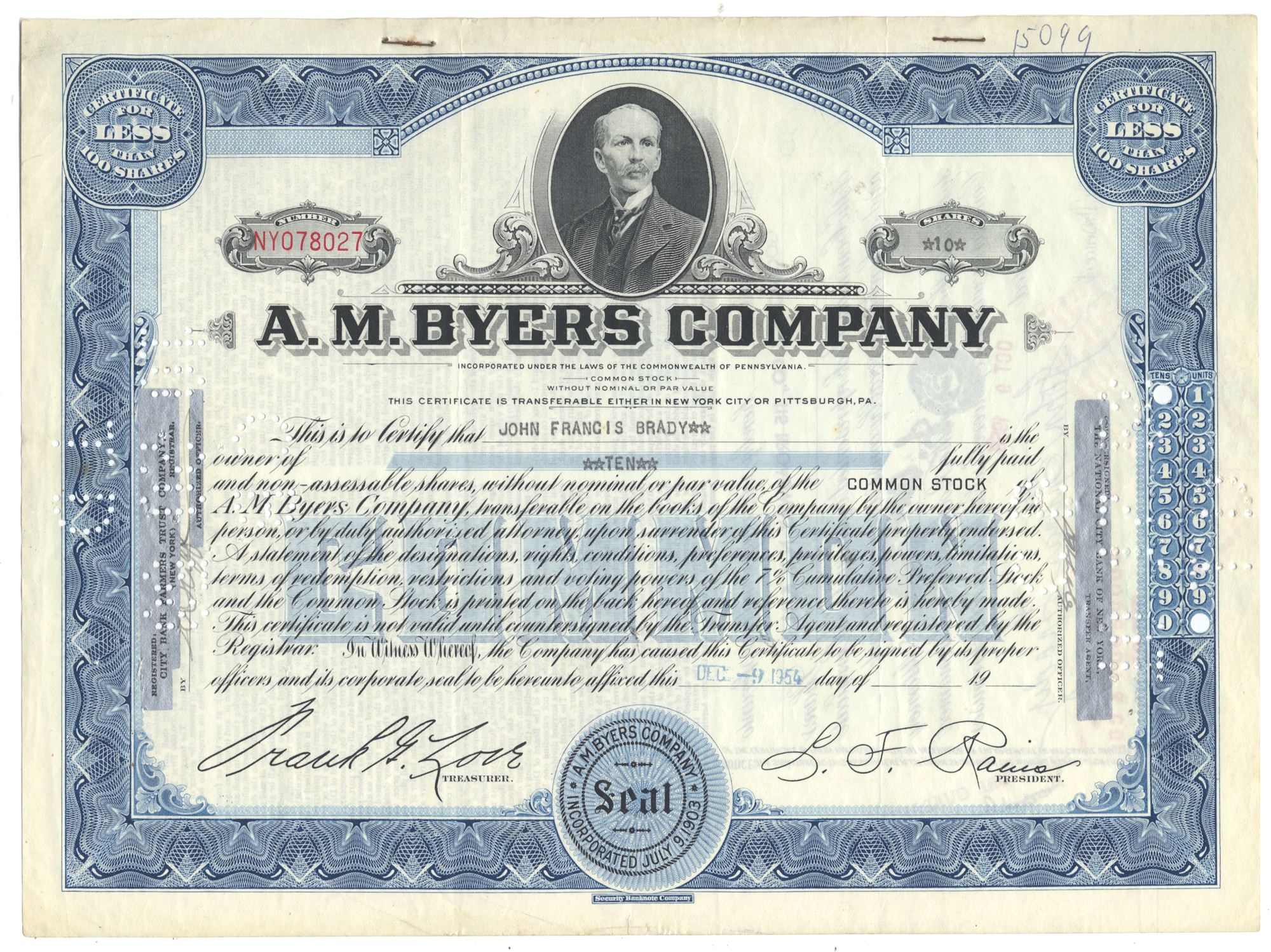
Commonwealth Telephone Company
- Guaranteed authentic document
- Orders over $75 ship FREE to U. S. addresses
Product Details
CompanyCommonwealth Telephone Company
Certificate Type
Capital Stock
Date Issued
September 21, 1937
Canceled
Yes
Printer
Goes
Signatures
Hand signed
Approximate Size
11 1/4" (w) by 8 1/2" (h)
Images
Show the exact certificate you will receive
Guaranteed Authentic
Yes
Additional Details
NA
Historical Context
The company dates its beginnings to 1897, when Bert Stroh constructed a telephone line linking his home in Center Moreland, Pennsylvania, to that of a neighbor. His further linkups resulted in the organization of the Center Moreland Telephone Company in 1902. Three years later this company merged with the Northern Lackawanna Telephone Company to form Commonwealth Telephone Company. In 1912 Commonwealth Telephone signed a contract with the Bell Telephone Company that gave it exclusive territorial rights. In return, Commonwealth was linked to the American Telephone & Telegraph long-distance lines and the New York Telephone Company.
Andrew J. Sordoni, a state senator, acquired a controlling interest in Commonwealth Telephone in 1928 through Public Service of Pennsylvania, Inc. and assumed the presidency of the corporation. Headquarters were in Forty Fort, Pennsylvania. In 1930 the company was supplying telephone service in Wyoming, Sullivan, and Susquehanna countries and parts of Luzerne, Lackawanna, and Bradford counties. Commonwealth made money throughout the Great Depression.
By 1953 Commonwealth Telephone was providing service in eight Pennsylvania counties, with 27,186 telephones in service and corporate headquarters in Dallas, Pennsylvania. Sordoni had moved up to chairman, while Andrew J. Sordoni, Jr. had become president in 1950. Commonwealth acquired Tioga County Bell Telephone Company in 1953, adding more than 6,000 telephones to its system, and Pennsylvania Community Telephone Company, with over 15,000 telephones in service, in 1954. The number of counties covered, in 1960, had reached 16, with 75,046 telephones in service.
Related Collections
Additional Information
Certificates carry no value on any of today's financial indexes and no transfer of ownership is implied. All items offered are collectible in nature only. So, you can frame them, but you can't cash them in!
All of our pieces are original - we do not sell reproductions. If you ever find out that one of our pieces is not authentic, you may return it for a full refund of the purchase price and any associated shipping charges.





